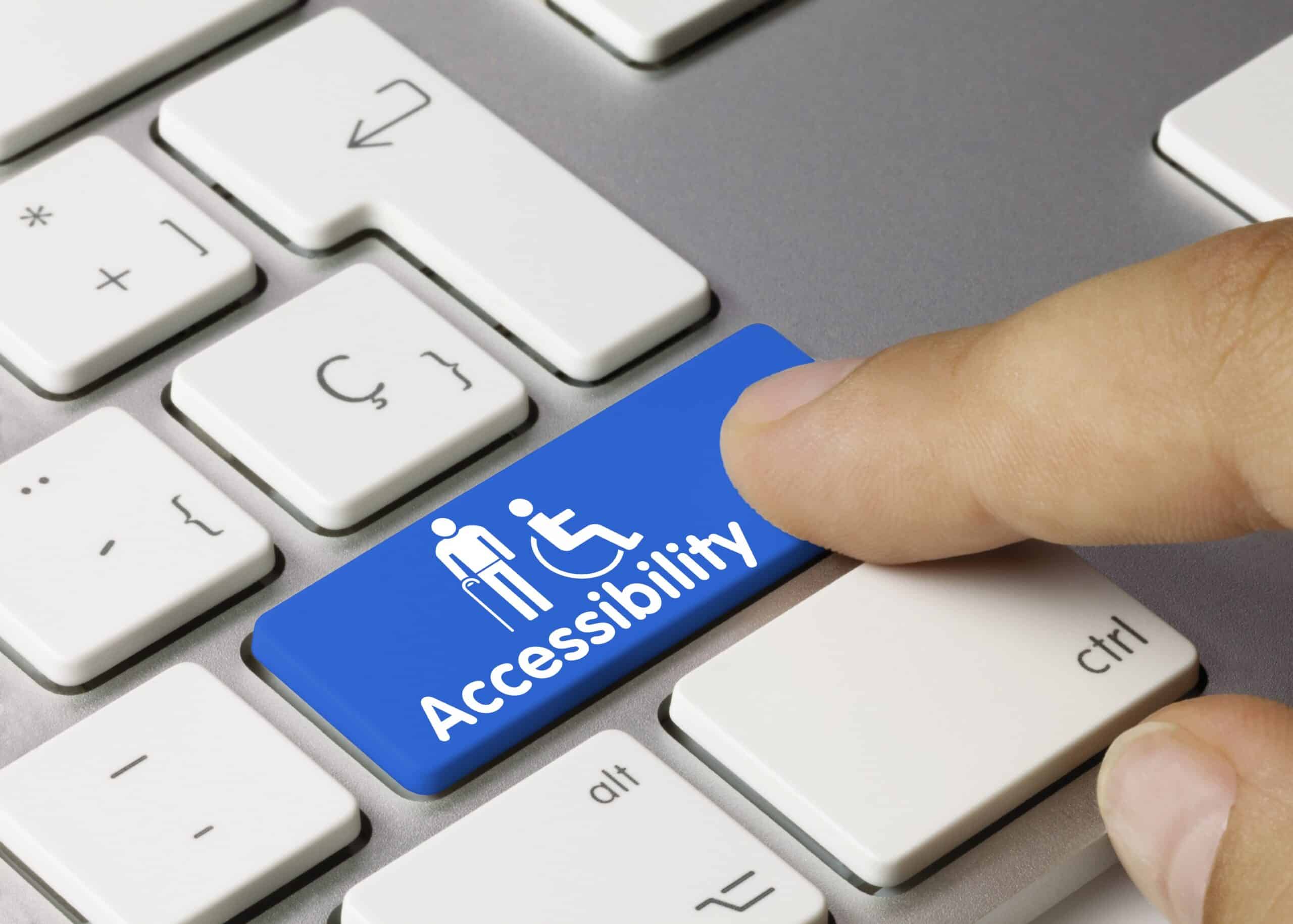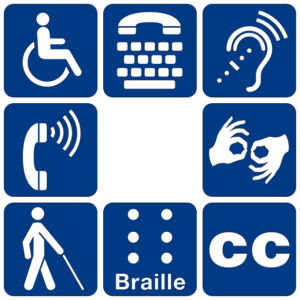Get up to date on Massachusetts state accessibility law, including caption law and requirements! As a…

A Brief History of Accessibility Law in the U.S. [Infographic]
A Brief Timeline of Accessibility Law in the U.S.
The fight for disability rights in the U.S. has a long and storied history. From the legal sterilization of Virginians with mental disabilities in the 1920s to 1970s, to the passage of the Americans with Disabilities Act in 1990, there have been both losses and wins for accessibility law in the U.S.
The timeline below highlights the major accessibility laws and Supreme Court decisions that have established civil rights for Americans with disabilities.
Today, various laws protect individuals with disabilities, but there is still work to be done in regards to technology. We will look at the way courts are dealing with the ambiguity concerning the internet and technology, as well as look at how education is affected by accessibility laws.
History of Accessibility Law
View infographic in a separate tab.
How Has Technology Been Addressed?
Most of today’s accessibility laws were passed before the rise of advanced technology and the widespread use of the internet. Lawmakers and activists are working to update these laws so that they are explicit in the inclusion of technology and set effective accessibility requirements.
So far, the U.S. Access Board has updated Section 508 to reflect the most current version of the World Wide Web Consortium’s (W3C) Web Content Accessibility Guidelines (WCAG 2.0). Lawyers anticipate that the Department of Justice will soon amend the Americans with Disabilities Accessibility Guidelines (ADAAG) to include requirements for information and communication technology.
In the meantime, court cases have established that Section 504 and the ADA require reasonable modifications and adherence to web accessibility requirements for the online information and technology supplied by many businesses and organizations.
How Do Accessibility Laws Affect Education?
As you can see on the timeline, there are a few references to education. Four federal accessibility laws pertain to education either directly or indirectly.
1. IDEA
 The Individuals with Disabilities Education Act ensures that every child in the U.S. has equal access to a public school education, regardless of a disability. Schools are obligated to teach students with disabilities in a classroom environment whenever possible and to provide them with the tools necessary to succeed.
The Individuals with Disabilities Education Act ensures that every child in the U.S. has equal access to a public school education, regardless of a disability. Schools are obligated to teach students with disabilities in a classroom environment whenever possible and to provide them with the tools necessary to succeed.
IDEA also provides parents a voice in their child’s education. Parents can collaborate and have input in the educational decisions the school makes giving their child specific rights and protections.
2. ADA
Title II of the ADA prohibits disability discrimination in services, programs, and activities provided by State and local government entities. These entities include to publicly-funded universities, community colleges, and vocational schools.
Title III of the ADA prohibits disability discrimination in the full and equal enjoyment of the goods, services, facilities, privileges, advantages, and accommodations of any place of public accommodation. This includes private universities and vocational schools.
By Title II and III, institutions of higher education in the U.S. must make online lectures, courses, materials, websites, LMS, MOOCs, and any other technology accessible to students with disabilities as well as the public if made freely available.
3. Section 504
All federally funded schools in the U.S. must comply with Section 504 of the Rehabilitation Act. This includes making online lectures, courses, materials, websites, LMS, MOOCs, and any other technology accessible to students with disabilities.
4. Section 508
Section 508 of the Rehabilitation Act requires federal agencies to make their electronic and information technology accessible to disabled employees and members of the public by following the Section 508 Standards. There are four main instances in which a university would be subject to section 508:
- The university receives funding through the Assistive Technology Act
- The university is in a state that has adopted Section 508 into State laws for education
- The university’s accessibility policy requires 508 compliance
- The university is part of a larger university system that requires 508 compliance
For the past 15 years, schools have either cited WCAG 1.0 or Section 508 (modeled after WCAG 1.0) as the accessibility standards they aim to satisfy.
In 2008, WCAG 1.0 was replaced with WCAG 2.0. In 2016, the Section 508 standards were finally updated to reflect WCAG 2.0, but the DOJ has been enforcing WCAG 2.0 Level AA compliance for universities involved in ADA and Section 504 lawsuits for years.
It is in every school’s best interest to meet WCAG 2.0 Level AA conformance, not WCAG 1.0 conformance, to both ensure that students with disabilities have equal access and that the university does not violate federal law.
Keeping Up With Accessibility Law Changes
 If you want to stay in the know about U.S. accessibility law, follow our blog, or check out some of these resources:
If you want to stay in the know about U.S. accessibility law, follow our blog, or check out some of these resources:



